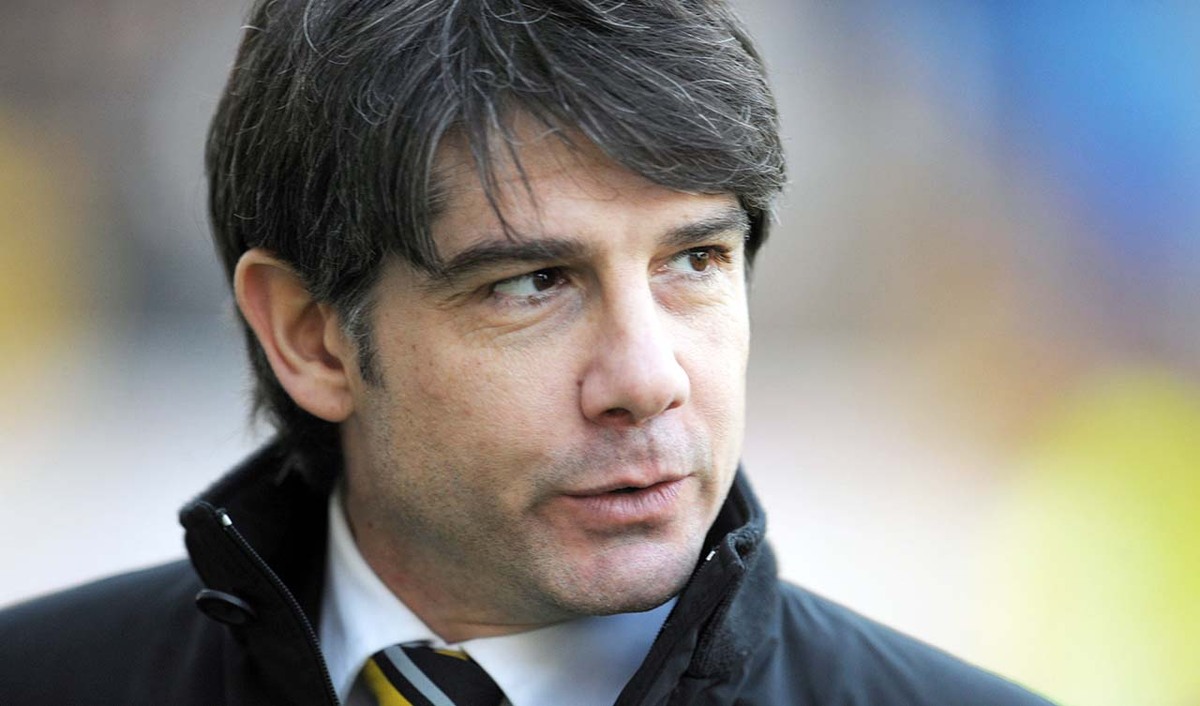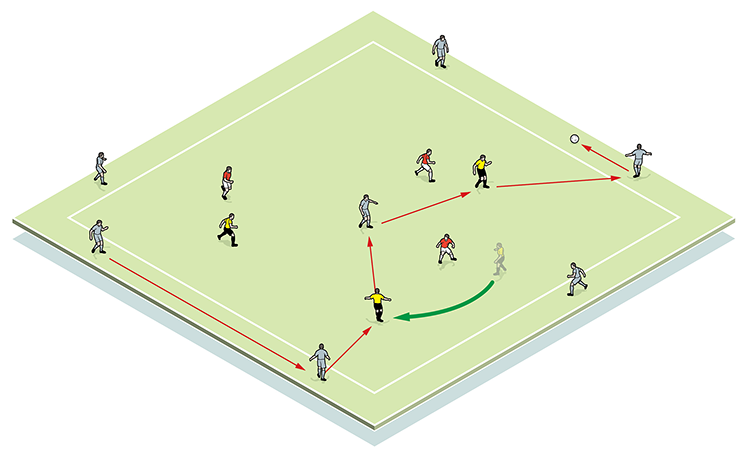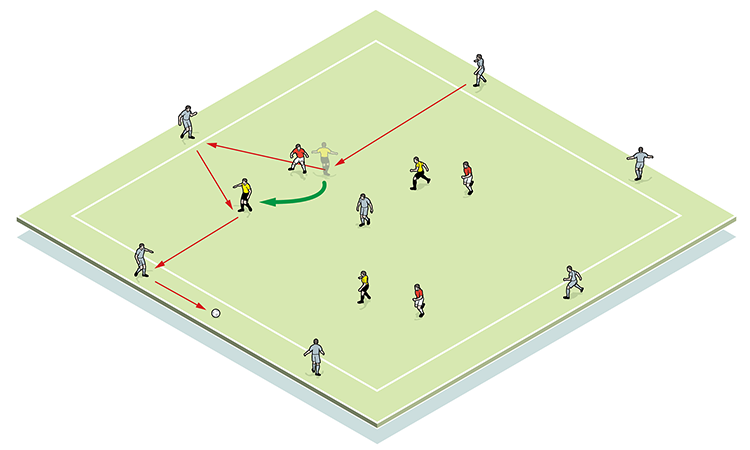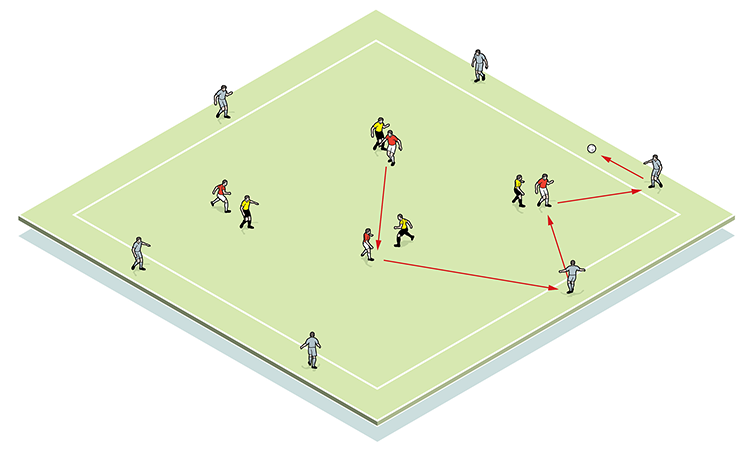Creating space in midfield
This session is about creating space in midfield in order to receive or support others in breaks. This scenario often occurs as a first build-up stage in a game when full-backs or centre-backs have possession and want to use it smartly.

| Area | 30x30 yards |
| Equipment | Balls, cones, goals |
| No. of Players | 13 |
| Session Time | Session 20mins, Development 10mins, Game 20mins |
This session is about creating space in midfield in order to receive or support others in breaks. This scenario often occurs as a first build-up stage in a game when full-backs or centre-backs have possession and want to use it smartly.
The set-up also encourages short triangular passing to break through compact midfield units, and this is a session that, if perfected, can break down even the most resilient of opposition lines.
What do I get the players to do?
Set up as shown in the diagram – the aim of the session is for a team to pass the ball from one end of the area to the other.
End players (there are two at each end) receive passes, pass sideways, and feed new balls into the area. Side players are one-touch, and act as extra passing outlets. The floater is one-touch and plays for the team in possession.
Using the floater – in effect, in a 4v3 overload – teams must receive the ball from an end player, work it through midfield and out to the opposite flank (1a). Along the way, they can use either side player as well. If they succeed in working the ball across, they now build a new move coming back the other way (1b).
If possession is turned over, the other team now uses the floater in attempting to perform the same move. If the ball goes out of play, the game restarts with an end player passing to either team.
1a

1b

What are the key things to look out for?
The timing of runs in creating space is crucial. Players must always be on the move, must rotate positions, work for angles, and pass the ball with speed and precision. Players should quickly learn when to retain possession and when to pass forward.
How do I progress the session?
We remove the floater, adding an extra player to each team to create a 4v4 (2a/2b). Deep midfielders are allowed two touches while others are one-touch.
2a

2b

How do I put this into a game situation?
In a 70x30-yard area – two end zones 20 yards deep with a middle 30-yard zone – this is a 6v6 game (3a/3b). It’s 2v1 in favour of defenders in each end zone, and 3v3 in the middle with a floater. Players must stay in their zones.
3a

3b

Central players must put into practice what they learnt in the main session, though now they work the ball to a frontman for a shot at goal. When the ball goes dead, play restarts each time with keepers, as teams build from the back.
Editor's Picks
Attacking transitions
Deep runs in the final third
Using the goalkeeper in build-up play
Intensive boxes drill with goals
Penetrating the final third
Creating and finishing
My philosophy
Pressing initiation
Compact team movement
Coaches' Testimonials

Alan Pardew

Arsène Wenger

Brendan Rodgers

Carlos Carvalhal

José Mourinho

Jürgen Klopp

Pep Guardiola

Roy Hodgson

Sir Alex Ferguson

Steven Gerrard
Coaches' Testimonials

Gerald Kearney, Downtown Las Vegas Soccer Club

Paul Butler, Florida, USA

Rick Shields, Springboro, USA

Tony Green, Pierrefonds Titans, Quebec, Canada
Join the world's leading coaches and managers and discover for yourself one of the best kept secrets in coaching. No other training tool on the planet is written or read by the calibre of names you’ll find in Elite Soccer.
In a recent survey 92% of subscribers said Elite Soccer makes them more confident, 89% said it makes them a more effective coach and 91% said it makes them more inspired.
Get Monthly Inspiration
All the latest techniques and approaches
Since 2010 Elite Soccer has given subscribers exclusive insight into the training ground practices of the world’s best coaches. Published in partnership with the League Managers Association we have unparalleled access to the leading lights in the English leagues, as well as a host of international managers.
Elite Soccer exclusively features sessions written by the coaches themselves. There are no observed sessions and no sessions “in the style of”, just first-hand advice delivered direct to you from the coach.









